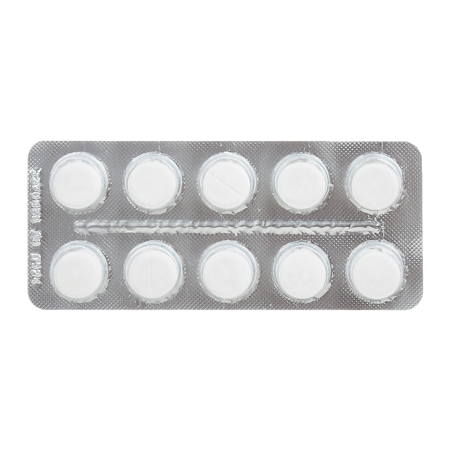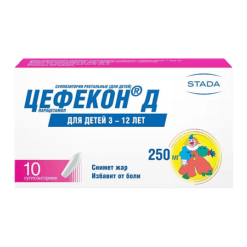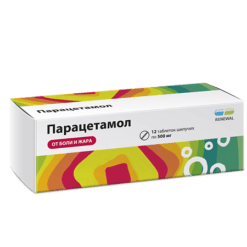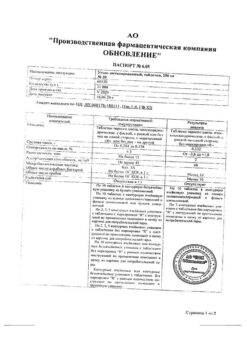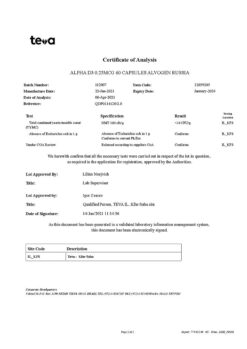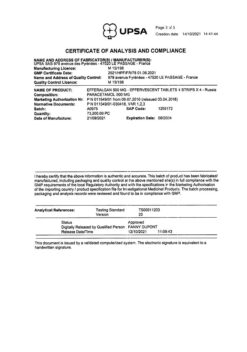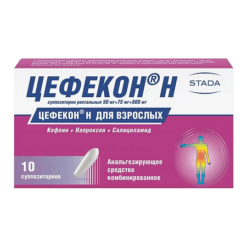No products in the cart.
Paracetamol, tablets 500 mg 10 pcs
€0.24 €0.22
Description
Paracetamol has analgesic and antipyretic effects.
The drug blocks cyclooxygenase in the central nervous system, affecting the centers of pain and thermoregulation.
In inflamed tissues, cellular peroxidases neutralize the effect of paracetamol on cyclooxygenase, which explains the lack of a significant anti-inflammatory effect.
The drug has no negative effect on water-salt metabolism and mucosa of the gastrointestinal tract.
Indications
Indications
Pain of mild to moderate intensity (arthralgia, myalgia, neuralgia, migraine, toothache, headache, aldysmenorrhea, fever. Pain syndrome of mild to moderate intensity (arthralgia, myalgia, neuralgia, migraine, toothache, headache, algodysmenorrhea), fever in infectious and inflammatory diseases (including viral infections).
Active ingredient
Active ingredient
Composition
Composition
Composition per tablet
the active ingredient:
Paracetamol – 500 mg;
excipients:
Potato starch,
croscarmellose sodium (sodium croscarmellose),
povidone (polyvinylpyrrolidone low molecular weight medical),
stearic acid,
talc.
How to take, the dosage
How to take, the dosage
Overly, before a meal or 1-2 hours after a meal with plenty of fluid.
Adults and adolescents over 12 years of age (body weight over 40 kg) single dose – 500 mg; maximum single dose – 1 g. Maximum daily dose is 4 g.
In children the dose of paracetamol is calculated depending on the age and body weight.
For children aged 6-9 years (weight up to 30 kg): single dose – 250 mg (1/2 tablet); maximum daily dose – 1 g; for children aged 9-12 years (weight from 30 to 40 kg): single dose – 250-500 mg (1/2 tablet – 1 tablet), maximum daily dose – 2 g (4 tablets).
The frequency of administration is not more than 4 times a day with an interval of at least 4 hours.
In patients with hepatic and renal dysfunction, with benign hyperbilirubinemia, and in the elderly, the daily dose should be reduced and the interval between doses increased.
The treatment duration is not more than 3 days as antipyretic and not more than 5 days as analgesic. The treatment with the drug can be continued only after consulting a doctor!!!
Do not exceed the prescribed dose! An overdose of paracetamol may cause hepatic failure.
Interaction
Interaction
Inducers of microsomal oxidation in the liver (phenytoin, ethanol, barbiturates, flumecinol, rifampicin, phenylbutazone, tricyclic antidepressants) increase the production of hydroxylated active metabolites, which causes the possibility of severe intoxication in small overdoses.
Long-term use of barbiturates reduces the effectiveness of paracetamol.
Simultaneous use with ethanol increases the risk of acute pancreatitis.
Microsomal oxidation inhibitors (including cimetidine) decrease the risk of hepatotoxic effects.
When taken together with nonsteroidal anti-inflammatory drugs, including salicylates, the nephrotoxic effect of paracetamol increases.
Diflunisal increases the plasma concentration of paracetamol by 50%, which increases the risk of hepatotoxicity.
Paracetamol increases the effect of indirect anticoagulants and reduces the effectiveness of uricosuric drugs.
Special Instructions
Special Instructions
Paracetamol concomitant use with other paracetamol-containing drugs should be avoided because it may cause paracetamol overdose.
Peripheral blood parameters and liver function should be monitored when using the drug for more than 5 days.
Paracetamol distorts the results of laboratory studies of plasma glucose and uric acid.
Contraindications
Contraindications
– individual hypersensitivity to the components of the drug;
– children under 6 years of age (for this dosage form).
With caution
Hepatic and renal failure, viral hepatitis, alcoholic liver damage, alcoholism, benign hyperbilirubinemia (Gilbert, Dubin-Johnson and Rotor syndromes), glucose-6-phosphate dehydrogenase deficiency, older age, pregnancy, lactation.
Side effects
Side effects
Nausea, vomiting, abdominal pain.
Allergic reactions (skin rash, itching, urticaria, Quincke’s edema).
Rarely – leukopenia, agranulocytosis, thrombocytopenia.
In long-term use in high doses – hepatotoxic and nephrotoxic (interstitial nephritis and papillary necrosis) effects; hemolytic anemia, aplastic anemia, methemoglobinemia, pancytopenia.
Overdose
Overdose
Symptoms: pale skin, nausea, vomiting, anorexia, abdominal pain; impaired glucose metabolism, metabolic acidosis. Symptoms of hepatic dysfunction may appear 12-48 hours after overdose. In severe overdose – hepatic failure with progressive encephalopathy, coma, death; acute renal failure with tubular necrosis; arrhythmia, pancreatitis. Hepatotoxic effects in adults occur at 10 g or more.
The treatment: gastric lavage no later than 4 hours after poisoning, taking adsorbents (activated charcoal). Methionine administration is relevant for 8-9 hours, acetylcysteine – for 8 hours. The need for additional therapeutic measures is determined depending on the concentration of paracetamol in the blood, as well as on the time elapsed after its administration.
Similarities
Similarities
Additional information
| Weight | 0.015 kg |
|---|---|
| Shelf life | 4 years |
| Conditions of storage | In a dry, light-protected place at a temperature not exceeding 25 °C |
| Manufacturer | Pharmstandard-Leksredstva, Russia |
| Medication form | pills |
| Brand | Pharmstandard-Leksredstva |
Other forms…
Related products
Buy Paracetamol, tablets 500 mg 10 pcs with delivery to USA, UK, Europe and over 120 other countries.

